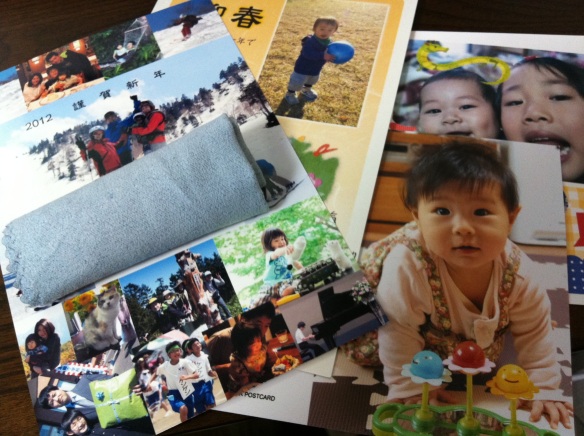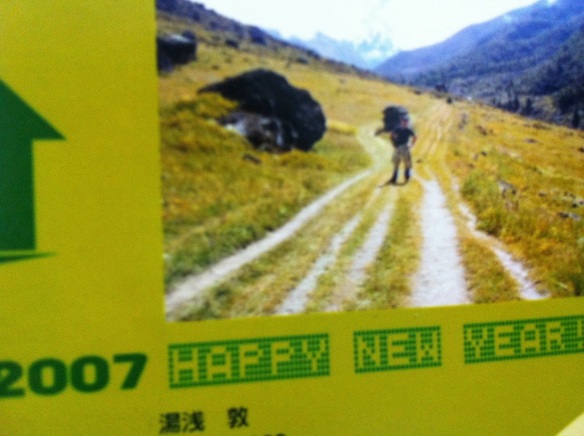The whole park, illumined. Sugoi. Took 500,000 lights. Sugoi.
Category Archives: new year
Happy New Year! Akemashite Omedetou Gozaimasu!
Thankful, mindful, purposeful. Yoi Otoshi Wo!
And so we’re down to the last day of the year; now just hours away from heralding a new year in, again with Hubs’ family whom I’d always be thankful for, for being always kind to me. It has been a BIG year for us in so many ways. Yes, 2012 is an unforgettable year in so many ways.
This year brought us a Big blessing from above. First month of the year we learned that I was with child (well honestly, first week of the year and first week of my pregnancy I already knew that I was expecting). Quite a very exciting way to start the year, right? And so because of how nature does things, within the year, we were already able to hold our big (very pretty) blessing in our arms and had her blessed by the Church as well.
In which within the year I finally knew how it feels to be a mother. The love, the joy, the worries, the tenderness I feel for my daughter is almost indescribable. We couldn’t be thankful enough to have had this blessing. As the new year buds, we are filled with much happy excitement as we look forward to seeing her grow and reaching milestones by the day.
The year brought me new friendships as well. Some can be said highly unlikely had circumstances been different. But it weren’t and I am so glad and thankful for the gift of friendship. Here’s a cheer to deeper and stronger friendships this coming new year!
And there’s work of course; in which I have reached some personal milestones. 🙂 🙂
Late this year however brought us Big sadness as well. My admirable paternal grandmother Lola Basing left us back in November and a dear selfless friend, Joms, silently and unexpectedly left us just days ago. Till now, I’m still unbelieving with their passing away; that somehow, part of me still thinks I’d get to see them the next time we visit Philippines or Singapore/Houston for Joms’ case. Their passing had left a chip in my heart that can never be filled again. But we have to learn to accept that their time has come and I do believe that their last wishes had been granted and that they’re happy in heaven now.
But still quite a very sad yearender, yes. So when we had flurries of snow earlier whilst the sun was setting, with it’s glorious orange glow, somehow, it comforted me and made me smile and made me even more hopeful for the new year ahead.
We have things planned at the start of the year and I couldn’t wait to get started on it. We’re looking forward to more happy firsts with Moirraine. Indeed, many happy moments/things to look forward to, with God’s grace. We may be heralding the new year in with a grieving heart but still, we have to remind ourselves of happy things and blessings to look forward to.
Yoi Otoshi Wo!

—–
Yoi Otoshi Wo is what the Japanese say when wishing one another a happy new year before the new year has unfolded.
The toshikoshi soba in above photo is the Japanese traditional yearender meal.
Holy Week online retreat
What our retreat coordinator said back in College was really spot on – that we should take advantage of our yearly retreats as we wouldn’t have it as often anymore after graduation. Indeed she was right as 7 years after graduation saw me without undergoing any retreats.
Hence when I learned about the Philippine Jesuits’ online retreat two years ago, it was like finding a treasure.
These online retreats have come to be really meaningful and enriching for me. As I live in a country where Good Friday is a normal working day, these online retreats I such a treasure.
Last year, their theme was about the Fugitives of Lent. I remember having had to keep hubs on hold in our Skype conversation because I was still full of emotions from the night’s session. I hope this year I can do it with hubs.
This is the theme for this year.
For those who cannot go to retreat places or on a pilgrimage like me, please know that you can also have a retreat in the quiet of your home. It won’t take more than thirty minutes of your time, for only three days.
Make your Holy Thursday, Good Friday and Black Saturday richer and more meaningful.
Click here to know more about the online retreat organised by the Philippine Jesuits.
on Daruma dolls and wishes
One of my officemates hail from Takasaki, Gunma. As omiyage to us after the holidays, he gave each of us a daruma doll.
Representing a famous Zen monk, the daruma doll is a good luck charm usually bought during new year. This tradition of having the daruma doll as good luck charm was started at the Shorinzan Daruma Temple (少林山達磨寺, Shōrinzan Darumaji) in Takasaki several centuries back and has since spread across temples of Japan. (info source: www.japan-guide.com)
The daruma is usually bought without the pupils on. You make a wish and paint in a pupil. When your wish comes true, you can then paint on the other pupil. And so our daruma now sits atop Tofu. Pupil painted on by hubs.
At the end of the year, the daruma dolls are returned to the temples to be burned. Hope that when we return ours at the end of the year it already has two pupils on.
The nengajō aka Japanese new year card
It’s already the middle of January (how time flies!) and I still have a number of posts in line that is related to the Japanese New Year festivities or more known here as Shōgatsu (正月). The Japanese culture is just so rich with detail and flair!
So, the nengajō (年賀状). At a time when a lot of us are busy darting to and fro looking for the perfect gifts and cards for Christmas, the Japanese are busy as well with the preparations in sending the nengajō or the Japanese post cards which will be sent on January 1 granting you didn’t miss the deadline. So one can just imagine how busy the Japan Post is at this time of the year. It was amazing to see Japan Post employees standing at the side of the road with bags in hand so that motorists can drop their nengajō on the bag without parking or stopping over at the post office. Talk about efficient.
Some people, probably those who are in the arts and crafts, make their own nengajō. For the likes of me though, thankfully, stationers sell preprinted cards. Even convenience stores sell nengajō!
At Family Mart.
People are selling preprinted cards everywhere in that one can even order for the cards in front of a train station.
At JR Sakuragicho station.
We had ours ordered online though and had it personalised by おたより 本舗 (email them at ot@arts-net.co.jp).
Decided it best to have one of our wedding photos on our nengajō this year since the wedding was a great milestone for us for the year.
So yes, aside from well wishes for the new year, the nengajō is also a venue for people to share their milestones for the year by sharing photos. Hence it’s usual to see wedding photos, photos of their kids and babies, and photos of the sender from one of his/her travels.
Aren’t these kids just cute??!
People also take advantage of the nengajō to update their friends for any change of address or phone number.
If there has been a death or mourning in the family though, people send the mochuo (喪中), a card informing their friends to not send them the nengajō as respect to the grieving family/friend of the departed. We got three mochuo last December; the mochuo is usually sent weeks ahead of the nengajō.
Aside from the messages, photos and address/phone numbers, the nengajō is also sometimes decorated with famous cartoon characters alongside with the Chinese zodiac for the year. As this year is the year of the dragon, we got nengajō with cute dragon drawings.
For those which had the front of their nengajō full with photos, like ours, the stamp has some dragon drawing in it.
This was Atsushi’s stamp back in 2007 during the year of the pig.
And this was his front photo back then, a photo of him taken at Langtang Valley in the Himalaya.
The stamps aren’t just there for design though as they really serve as postal stamps. After writing down personal messages and written down the addresses of the recipients, one can immediately drop it at any postal box without paying anything since the stamp cost is already included in the price of the nengajō. It stands to reason though that only those accredited by the post office can sell nengajō.
Pretty interesting isn’t it? 🙂
















